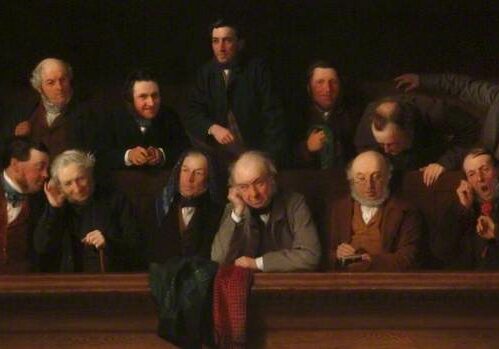Sentencing Enhancements: California Leads the Way to Fewer Mandatory Enhancements

United States Supreme Court Justice Louis Brandeis famously wrote that a “state may, if its citizens choose, serve as a laboratory; and try novel social and economic experiments without risk to the rest of the country.” (New State Ice Co. v. Liebmann).
The current trend in the world of criminal justice is a shift away from mass incarceration. Indeed, for decades the U.S. has been incarcerating more of its citizens per capita than any other country on Earth. Yet, we have seen no real difference in crime rates compared to other industrialized nations.
There have been many moves towards reform, such as new regulations recommended by the United States Sentencing Commission. However, the State of California is taking a more active approach to combat the rising mass incarceration rates in the US. The state is implementing new, substantial regulations to reform sentencing enhancements.
What Are Sentencing Enhancements?
Most criminal laws on the books specify a range of possible punishments for all crimes. For example, a misdemeanor in one-state could be punishable by up to one year in jail and up to a $1,000 fine. Upon sentencing a defendant for that misdemeanor, the judge decides the appropriate sentence within that given range. However, the judge has discretion to go above the suggested range. The judge would use so-called “sentencing enhancements” (sometimes called “aggravating factors”) to justify a departure from the normal punishment range.
Some of the more common sentencing enhancements or aggravating factors include:
- Weapons. The carrying or use of a weapon during the commission of a crime is one enhancement that would justify a sentence that was above the normal range.
- Prior convictions. Enhancements based on a person’s criminal record exist in every state in the U.S. For example, California has a “three strikes law” that requires a 25-year-to-life sentence in prison upon conviction of a third serious or violent felony.
- Hate crimes. Many states permit sentencing enhancements if the defendant targeted the victim based on his or her race, ethnicity, gender, national origin, disability or sexual orientation.
- Gang crimes. Reflecting the danger posed by criminal gangs in many states, a sentence may be enhanced beyond the normal range for crimes associated with gang activity.
Sentencing enhancements can play a large role in criminal cases. They may have a negligible impact on a severe sentence but can add significant time to a less serious crime.
CA Gun Sentencing Enhancement Revised
In keeping with the notion that states can be laboratories for new policies and initiatives, California appears to be addressing the prison overpopulation problem by giving judges more discretion on whether certain sentencing enhancements should apply.
California’s 10-20-Life sentencing enhancement required judges to impose extra penalties whenever a gun is used in a violent felony. This “use a gun and you’re done” enhancement required an additional ten years on a prison sentence if a gun was displayed during the felony. Should the gun be fired during the crime, the individual faced an additional 20 years in prison. And if the gun being discharged led to an injury, the person could be facing live in prison.
However, as of January 1, 2018, the California Legislature deemed this enhancement no longer mandatory. Now, judges in California can dismiss and apply this enhancement as they deem appropriate.
Mandatory sentencing and the future
California’s revamping of its mandatory sentencing is an important first step away from the mass incarceration culture prevalent in the United States.
If you need advice or representation regarding a sentencing issue, Brandon Sample PLC should be your sentencing advocate. Brandon Sample has the passion and expertise to help you with your federal criminal justice needs. Call 802-444-HELP today for a free case review.
Recommended for you
Ex Parte Communications By Judge With Jury Required Reversal Of Convictions
At Martin Bradley III’s trial for racketeering, mail fraud, wire fraud, and money laundering, the district court had two ex parte communications with the jury. Bradley’s defense lawyers did not become aware of notes until after his appeal. Bradley filed a 2255 motion arguing, in addition to other things, that the court had violated Rule…
Supervised Release Cannot Be Revoked After Supervision Term Ends
Anthony Holman’s supervised release was revoked for failing to pay restitution and picking up a new charge. However, the violation petition was not submitted until after Holman’s term of supervision had already expired. No summons was pending at the time either. Generally, whenever a U.S. Probation Officer believes that a defendant has violated his or…
Burrage Applies Retroactively To Cases On Collateral Review
In Burrage v. United States, 134 S. Ct. 881 (2014), the Supreme Court held that “at least where use of the drug distributed by the defendant is not an independently sufficient cause of the victim’s death or serious bodily injury, a defendant cannot be liable under the penalty enhancement provision of 21 U.S.C. § 841(b)(1)(C)…




